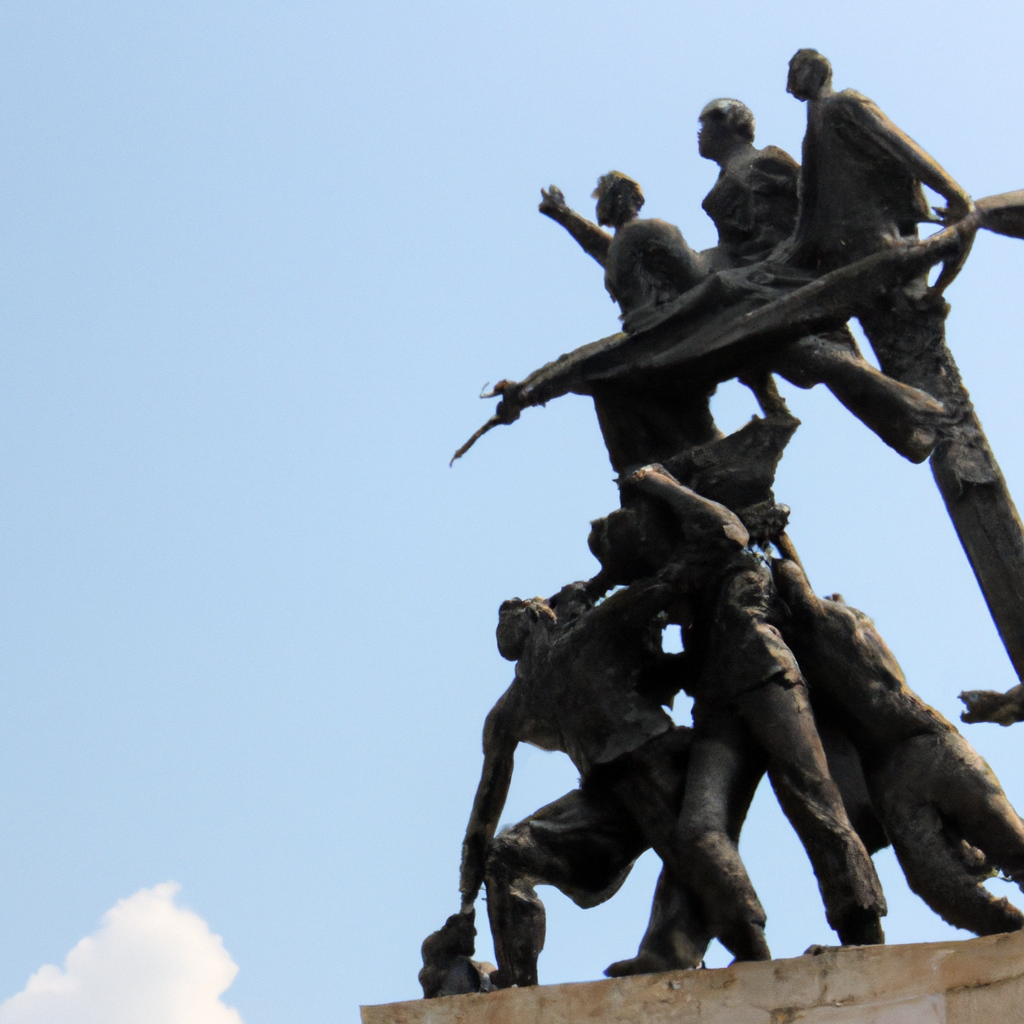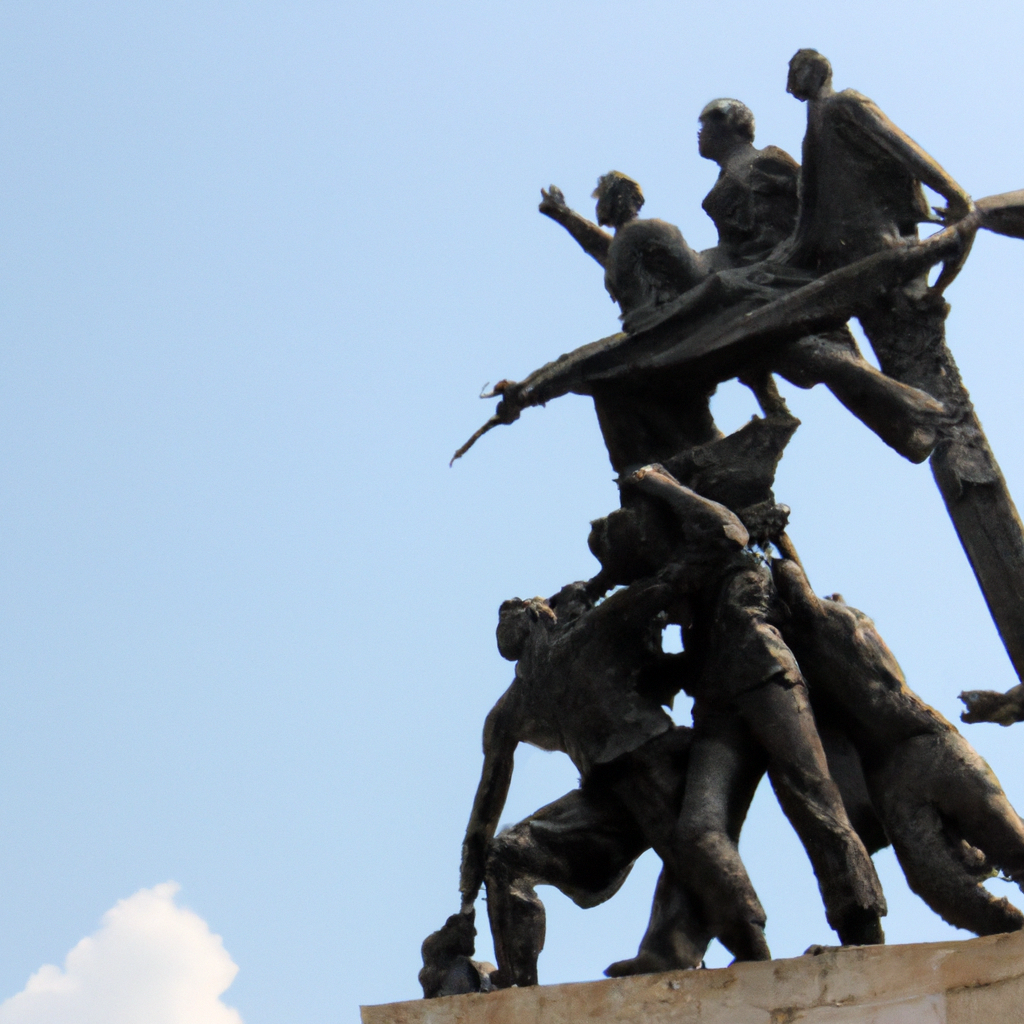Table of Contents
“Uncovering the Power of the People: A Look at Civilian Uprisings Throughout History”
The Boston Tea Party: A Revolutionary Civilian Uprising
On December 16th, 1773, a group of American colonists, fed up with the oppressive taxation policies of the British government, took a stand against the tyranny of the Crown. This event, known as the Boston Tea Party, was a revolutionary civilian uprising that would forever change the course of American history.
The Boston Tea Party was a direct response to the Tea Act of 1773, which granted the British East India Company a monopoly on the importation of tea into the American colonies. This act was seen as an affront to the colonists’ right to self-governance, and it sparked a wave of outrage throughout the colonies.
In response, a group of colonists, led by Samuel Adams, organized a protest against the Tea Act. On the night of December 16th, a group of colonists, dressed as Native Americans, boarded three British ships in Boston Harbor and dumped 342 chests of tea into the water. This act of defiance sent a powerful message to the British government that the colonists would not stand for taxation without representation.
The Boston Tea Party was a pivotal moment in the American Revolution. It demonstrated the colonists’ commitment to liberty and their willingness to take a stand against oppressive taxation. The event also served as a rallying cry for the American Revolution, inspiring other colonies to join the fight for independence.
The Boston Tea Party was a revolutionary civilian uprising that changed the course of American history. It was a powerful statement of the colonists’ commitment to liberty and their refusal to accept oppressive taxation. The event served as a rallying cry for the American Revolution and inspired other colonies to join the fight for independence. The Boston Tea Party will forever be remembered as a symbol of the colonists’ courage and determination to stand up for their rights.
The French Revolution: The People’s Revolution
The French Revolution of 1789 was a people’s revolution, a seismic shift in the power dynamics of the country that had been centuries in the making. It was a revolution of the people, by the people, and for the people, and it changed the course of history.
The French Revolution was a direct result of the oppressive and unjust rule of the monarchy and the aristocracy. The people of France had been suffering under the weight of high taxes, poverty, and inequality for years, and they had had enough. The people rose up in protest, demanding change and an end to the oppressive rule of the monarchy.
The French Revolution was a period of great upheaval and change. The people of France overthrew the monarchy and established a new government based on the principles of liberty, equality, and fraternity. They abolished the feudal system and established a new system of government based on the principles of democracy.
The French Revolution was a people’s revolution, and it had a lasting impact on the world. It inspired other revolutions around the world, and it set the stage for the modern era of democracy and human rights. The French Revolution was a pivotal moment in history, and it is remembered as a people’s revolution that changed the course of history.
The American Revolution: The Birth of a Nation

The American Revolution was a pivotal moment in world history, marking the birth of a new nation and the dawn of a new era of freedom and democracy. It was a conflict that pitted the American colonists against the British Empire, and it was a struggle that would ultimately lead to the establishment of the United States of America.
The American Revolution began in 1775, when the British government attempted to impose taxes on the American colonies without their consent. This sparked a wave of protests and demonstrations, and soon the colonists began to organize a unified resistance. In April 1775, the first shots of the Revolution were fired at the Battle of Lexington and Concord.
The American Revolution was a long and bloody conflict, with both sides suffering heavy losses. The British had the advantage of superior numbers and resources, but the Americans had the advantage of fighting on their own soil and the support of the French. In the end, the Americans were able to secure their independence in 1783, after the signing of the Treaty of Paris.
The American Revolution was a major turning point in world history, and it had a profound impact on the development of the United States. It established the principles of democracy and freedom that are still cherished today, and it laid the foundation for the nation we know today. The American Revolution was the birth of a nation, and it is a legacy that will never be forgotten.
The Indian Rebellion of 1857: The First War of Independence
The Indian Rebellion of 1857 was the first major uprising against British rule in India, and is often referred to as the First War of Independence. It began as a mutiny of sepoys of the British East India Company’s army on 10 May 1857, in the town of Meerut, and soon escalated into other mutinies and civilian rebellions largely in the upper Gangetic plain and central India, with the major hostilities confined to present-day Uttar Pradesh, Bihar, northern Madhya Pradesh, and the Delhi region.
The rebellion posed a considerable threat to British power in that region, and was contained only with the reorganization of the British Army and the assistance of Princely states. The rebellion is also known as India’s First War of Independence, the Great Rebellion, the Indian Mutiny, the Revolt of 1857, and the Uprising of 1857.
The rebellion began as a mutiny of sepoys of the East India Company’s army on 10 May 1857, in the town of Meerut, and soon escalated into other mutinies and civilian rebellions largely in the upper Gangetic plain and central India, with the major hostilities confined to present-day Uttar Pradesh, Bihar, northern Madhya Pradesh, and the Delhi region. The rebellion, which began as a protest against the British East India Company’s rule in India, soon assumed the character of a national struggle for independence.
The rebellion was led by a number of Indian princes and leaders, including the last Mughal Emperor, Bahadur Shah Zafar, who was declared the figurehead of the rebellion by the rebels. The rebellion was also supported by a number of Indian states, including Awadh, the Nizam of Hyderabad, and the Marathas.
The rebellion was ultimately suppressed by the British, who used a combination of military force and political maneuvering to regain control of India. The British also implemented a number of reforms in the wake of the rebellion, including the introduction of the Indian Councils Act of 1861, which provided for the establishment of local legislative councils in India.
The Indian Rebellion of 1857 was a major turning point in the history of India, and is remembered as the first major struggle for independence from British rule. It is also remembered as a symbol of Indian unity and solidarity in the face of foreign rule.
The Paris Commune of 1871: A Revolutionary Uprising in France
The Paris Commune of 1871 was a revolutionary uprising in France that lasted for two months and marked a major turning point in the history of the country. It began on March 18, 1871, when the citizens of Paris, led by the National Guard, rose up against the government of Adolphe Thiers and declared the city an independent commune. The uprising was sparked by the government’s decision to disarm the National Guard, which had been formed to protect the city during the Franco-Prussian War.
The Paris Commune was a radical experiment in direct democracy, with citizens electing their own representatives to govern the city. The commune abolished conscription, abolished the death penalty, and declared that all citizens had the right to work. It also sought to redistribute wealth and property, and to provide free education and healthcare.
The Paris Commune was brutally suppressed by the French government in May 1871. The government sent in troops to retake the city, and the ensuing violence resulted in the deaths of thousands of communards. The Paris Commune was a failed revolution, but it had a lasting impact on French politics and society. It inspired future generations of revolutionaries and helped to shape the modern French Republic.

Leave a Reply